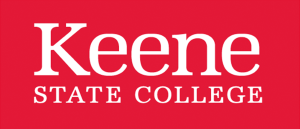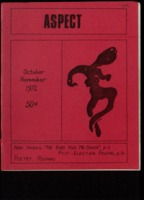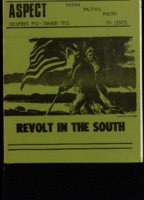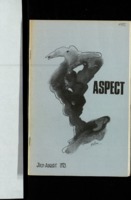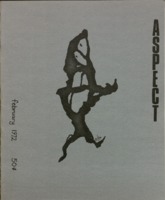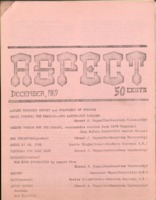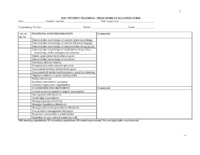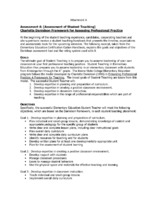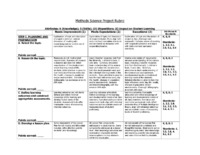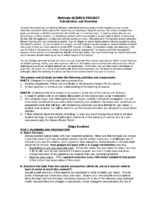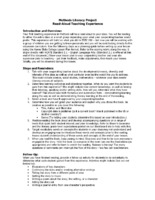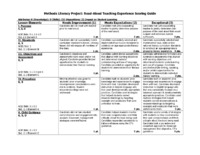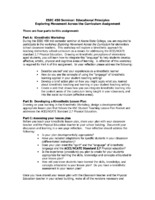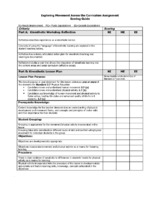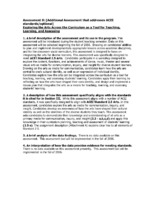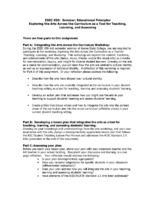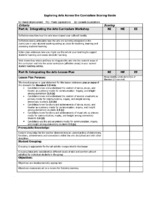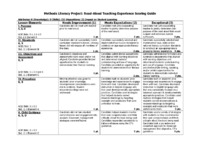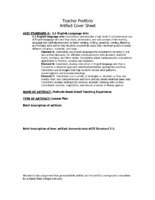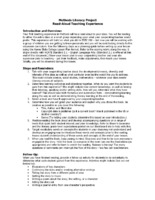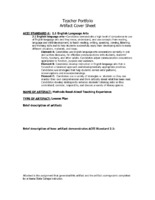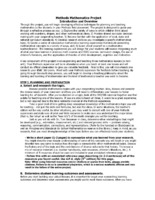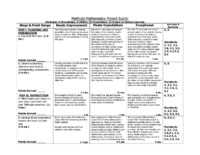Search
13391 items
-
Aspect Magazine vol. 8, issues 44-45, October-November 1972
This issue is staple bound with a red front and back cover. The front cover is divided into four panels. Under the title in the top panel, on the left, is the issue number, year of publication, and price. In the right panel is an abstract, single-tone illustration by Harland Ristau. A lower panel advertises pieces by Peter Fenton and Edward Hogan, along with "Poetry, Reviews". There is an error on the table of contents. It says that Ed Hogan's essay "A Look Into the Past and at the Future at the End of a Long Campaign" begins on page sixteen. The essay begins is on page eighteen. The issue begins with Peter Fenton's short story "the bird and Mr. Onion." The title and author's name are centered on the page, with the text of the story forming a box around it. The piece ends on page nine with a single tone, uncredited illustration of a dead tree, or snag, in a rainstorm. On page sixteen there are two quotations by one of the founders of the Students for a Democratic Society (SDS), Tom Hayden, from an interview with him published by Rolling Stone in October of 1972. The first quote expresses dissatisfaction with the 1964 Democratic National Convention. The second quote explains the merger of the New Left with the anti-war movement. On page seventeen, the header "four more years" appears in large, bold font. There are five quotations on this page, the first two from Robert F. Kennedy. The first quotation is critical of Richard Nixon; and the second praises Senator George McGovern, who ran against Nixon in the 1972 presidential election. Neither quote is attributed to an interview or dated. The final three quotations, by Hunter S. Thompson, are also taken from the October 1972 issue of Rolling Stone. Thompson is critical of Nixon and supportive of McGovern questioning Nixon's flaws and wondering how low one must go to become president. The quotations are a preface for Ed Hogan's essay that begins on page eighteen. "A Look Into the Past and at the Future at the End of a Long Campaign" is a response to the defeat of McGovern by Nixon in the 1972 presidential election and is divided into three parts. The first part, "Why?", recounts the events leading up to McGovern's loss. Part two, "Where do we go from here?" hopes to keep the reform movement alive. The third and final section, "The Chimera of Peace," focuses on peace and the dwindling hope for it. Hogan includes three McGovern statements made at the end of his campaign where he criticizes Nixon and his administration for "playing politics" with federal departments, the Supreme Court, and the lives of soldiers. Between the end of Peter Fenton's short story and the quotations on page sixteen there are seven poems: two untitled poems by Richard Latta, "L'Auxiliare Des Dames," by Walter Griffin, "New Nude" by Emilie Glen, and "Summer" and "No Poet" by Lori Petri. Five poems appear in the pages between Hogan's essay and his book review. "19th Floor by Paulette Carroll, "The Loser, #3" by Anthony P. Nasta, "A Plowboy Dreams" by Done E. Owens, "Poor Man's Prayer" by Frederic Matteson and "Law" By John Hahn. A review by Ed Hogan of "Winning Hearts and Minds: War Poems by Vietnam Veterans," that begins on page twenty-five, begins with a poem by Larry Rottman. The review illustrates the general attitude towards the war and the response veterans receive when they return. The review is followed with a second poem, "S. O. P." by Rottman. Pages twenty-five through twenty-eight contain six poems: "A Bummer" and Hoa Binh" by Michael Casey, "Hunting" by W.D. Earhart, and "The Walk" by Charles M. Purcell. Pages twenty-nine and thirty list small press and book publications received by Aspect. There are brief notes on each entry by Edward J. Hogan: four books published by Green Night Press (Amherst, Massachusetts,) The Little Free Press (Minneapolis, Minnesota), five books by Monday Morning Press (Milwaukee, Wisconsin), A book of poems, This Place, by Ronald Critter, Sanity Now (La Puente, California), Second Coming (San Francisco), and the Something Else Newsletter (West Glover, Vermont). A short excerpt about the merits of literature begins at the bottom of page thirty and continues onto page thirty-one along with an illustration by Noelle Salter. A final two stanza poem, "a gypsy and a recluse," by Richard Carboni appears on page thirty-one. The back cover has an illustration of a woman in sunglasses holding a flower in her left hand on centered on the page. Above and below the illustration is a brief biographical note on each contributor to the issue. -
Aspect Magazine vol. 8, issues 46-47, December - January, 1972-1973
On the green front cover of this issue of Aspect Magazine is a drawing in black ink by Lynd Ward of an African American man and a white man holding an American flag with the words "Revolt in the South" in bold black lettering underneath. The cover drawing is reprinted with permission of The New Republic magazine. Above the drawing in black ink are the title and date and the words "Fiction," "Politics," and "Poetry," and the price, "50 Cents." There are twenty-eight total pages in the issue.Following the Table of Contents is an essay titled "The Gander-Mooner" by M.K Kistner. Pages six through nine are a sequence of poems: "Intra-uterine Cannibalism" by Sally S. Anderson, "Saturday Night" by Paul Dominguez, an untitled poem by Robert E. Schalit, and "Four A.M." by Ed Porter. On pages eleven through fourteen is a book review by Edward J. Hogan of Politics and Policies of the Truman Administration, edited by Barton J. Bernstein. On page fifteen, a second sequence of poems begins: "Indecision" by John Hahn, "Simple Question" by Fritz Hamilton, "To a Friend Depressed," by Geraldine Sanford, and an untitled poem by Richard Latta.On pages twenty through twenty-two is the essay "First Light" by Lawrence Black. On the bottom of page twenty-two is the poem, "Pin Ball Baby" by Henry Combellick, on page twenty-three the poem "Honest Politicians (Our Leaders)" by Rubin Zar, and on page twenty-four is the poem "Bloated Birds Can't Fly" by Anthony P. Nasta. Each of these poems is one page in length. On page twenty-five are notes on small presses written by Edward J. Hogan. There are notes on Leaves of Twin Oaks: Journal of a Walden Two Commune, the bi-weekly alternative newspaper; Nola Express, edited by Darlene Fife and Robert Head: Blats, a literary magazine focused on "non-poems" and edited by Peter Finch; and an edition of Intrepid, edited by Allen deLoach, "devoted to the 1970 conference of the foremost small press organization in the U.S, the Committee of Small Magazine Editors & Publishers," including essays about small presses and their place in American society and culture. Page twenty-eight, the back cover of the issue, provides a description of the contributors to this issue of Aspect. There are also two advertisements for the Journal of a Walden Two and Commune Edcentric, a magazine that features news and comments from the educational reform movement. -
Aspect Magazine vol. 9, issue 51, July-August 1973
The cover of this blue-tinged issue is a black and white abstract illustration by Harland Ristau entitled "Neurotic Vulture.". The table of contents is broken into three sections: an opening section of fiction, nonfiction, and a review; Poetry, and Art Work. Each section of the table of contents is in order by when that section appears. In the first section the page numbers are listed as 5, 14, 33 and 46. In the poetry the page numbers include 4, 9, 11, 12, 13, 23 etc. After the table of contents this issue transitions to a white, more paperback, kind of a color rather than the blue tinge reminiscent of a pamphlet. The first poem is called "Street Protest," which is about a group protesting in the middle of an intersection. The first story follows, "Local Color," about a man named Jack Nichols, who crashes his plane into a mountain as part of a stunt in front of the press and a crowd. Some in the crowd are disappointed that it didn't explode, saying it would have been better to watch on T.V. The short narrative poem that follows is untitled and narrates the life of Willie from beginning to the end. The next page is a photograph by Barry Eckstein of a group of six men talking to one another in front of a blank billboard, and a building. Two poems follow, the "Town Queer and "Down Franklin Avenue." Another short story follows, "The Lady and the Bitch," which is 'taken from a novel in progress by Mel Conway." At the end of this story is a drawing by Richard Latta. A series of short poems then follow: "Love Poem" by Stephen Broyhill "First Goodbye by Becky Fogle, "Winter Rooms," and "The Fisherman," by Frederic Matteson, "Tess," by Diane Stein, "A Well and a Fig Tree," by Lori Petri, "Sunday Afternoon," by Esther M. Leiper and "Great Mother," by Patricia Baker. The next two-page poem "Spring Irony" written by Robin Becker, is printed in landscape format. The sequence of poems concludes with "Partial Evolution" by Barbara A. Holland and "Broadway 8 A.M." by Dierdre MacGuire. The next piece is "Inflation and the Nixon N.E.P.," a short essay about the inflation occurring during the Nixon administration by William Blum. After the essay the poem "Expatriots," written by Cynthia Day Roberts, is about how wars aren't affecting the U.S anymore as they are "elsewhere". The next page has black and white abstract art by Harland Ristau titled in the Table of Contents "Harbor of Fear." The next piece is by the French-American Paulette Carroll, an "Instruction Manual for the French Ballade," details meters, breaks and syllable counts. A poem "Limbo" follows, a poem adapted into English from the French by Carroll. "Lisaveta to Raskolnikov," written by Barbara F. Lefcowitz, is a love poem written to a male Russian lover." The Summer before Darkness" is a review by Ellen Schwartz of a special issue of the Harvard Advocate: Feminine Sensibility (Winter 1973) and Doris Lessing's novel The Summer Before Darkness.. Four more poems follow this review: "Off Hand," written by Emile Glen "Empty Cola Can," by Anthony P. Nasta, "Here I Is," by Harland Ristau, and "Word Balloons." by Geraldine Sanford. "Off Hands" is an angry poem telling someone's spouse that they are through and to drop dead, and "Empty Cola Can" is about a man writing to Congress protesting the Vietnam War and how the Fenway is blocked with protestors. "Here I Is" is about a Civil Rights Protester in Alabama who can't go too far into the protest because he has work tomorrow, and "Word-Balloons" is about a lover who is not listening to the other and just day dreaming of the past, when the relationship was easy. This next section is called "Small Presses" and it starts of with an ad for Poets to submit their poems to the "New Newspaper" in Wichita, Kansas. The ad was written by Edward J Hogan and it says to address all poems and inquires to Theodore Gott. What follows is a review section of four books and all of the reviews were written by Edward J. Hogan. The first book is called, "A Book About Love & War & Death," by Dicks Higgins and published by "Something Else Press" and it is 240 pages long. Hogan finds himself lost due to the weight and philosophy of the text. The next book reviewed is "The Cats in the Colosseum" by John Stevens Wade and published by "The Crossings Press" and it is 36 pages long. Hogan is impressed by Wade's writing and Hogan says that it is timeless or unmodern as it discusses love in a cornfield or fishing in dark pounds. The next book, "Free Fire Zone" by Vietnam, Veterans, meaning there is more than one author and they aren't all listed. "Free Fire Zone" was published by "1st Casualty Press". While Hogan says there are excellent and poor entries out of the 24 poems in "Free Fire Zone" the most important part is that it helps understand Vietnam from the soldiers who fought in Vietnam. The one poem Hogan credits is "Candidate" by James Shield and the entry provided is about train tracks. The final book reviewed is "Planning Escape" by Alan Ziegler and published by "Release Press." Hogan does not say much about "Planning Escape" other than to understand "Planning Escape" one must read it and that it is a fine collection of poems. 24 "Drawings" is the last book reviewed and it is a collection of art by Paul Oppedisano and Harry Zirlin. It was published by "Release Press" and has 300 printed and 100 hand-colored drawings. Small Press continues after describing books three magazines that have all been reviewed by Edward J. Hogan. The first magazine reviewed is Ludd's Mill of Almondbury, Huddersonfield, England. It is described as delightfully chaotic and it contains social commentary, reviews, and some absurd jokes, among other topics. The second magazine reviewed called "Star-Web Paper," by editors Thomas Michael Fisher and Richard Blair and it is published by St. Andrews College. Not much is said by Hogan about "Star-Web Paper," other than that it was well illustrated and mentions poems by David Meltzer, Larry Zirlin, and Emilie Glen but not the name of the poems they contributed. The final magazine reviewed is "The White Elephant," and it was edited by Stephan Morse, Clifton Simms, and Mary Jane Morse. It was published in Oakland, California. Hogan describes it as more accessible than most little magazines. The issue ends with the "People Inside" that credits all who contributed to the issue of Aspect Magazine. -
Aspect Magazine vol. VI, issue 36, February 1972
The grey-blue cover, page one of this twenty-page stapled issue, is adorned with an ink-blot-like drawing by Harland Ristau titled, "The Owls Have It." Written on the front cover parallel to the spine is the issue number and date of publication, along with the title of the publication, Aspect. The Table of Contents includes a note that reads "Ellen Link, whose work was first published in ASPECT last month, has joined our editorial board. She is from Sommerville."This issue is comprised of one non-fiction opinion piece, "McGovern: Its About Time We Elected an Honest Man," by editor Edward J. Hogan, focused on prospective democratic party nominees in the 1972 Presidential election. Hogan briefly entertains a number of democratic candidates to challenge incumbent President Richard Nixon for a run at the White House in 1972. Hogan predicts that George McGovern is the best candidate to challenge Nixon. The issue includes a short piece of fiction by Daniele Guillroy, and a series of eight poems. Even numbered page numbers appear on the top left corner of the page, with the name of this publication, Aspect, in the top right corner. Odd numbered page numbers are marked in the top right corner of the page, replaced by the month and year of publication in the top left corner of each page.The poems begin on the second half of page seven: "In Younger Days," by Larry Neal Bowers, "Choice?" by Colleen E. Rutherford, "On Being a Publisher," by Tom Montag, Everyman's Price," by Wilson Stapleton, "Cotton Mather's Prayer," which appears with a stand alone, anonymous illustration of a cross on page ten, "Crazy Lopez, by Fritz Hamilton, and a three-part untitled poem by Ricahrd Latta. This is followed by a prose poem "Cabbage" by Daniel L. Guillory and a four-stanza poem "Scenes of Today" by Judy Shepps.Beginning on page fifteen is an index of contributors for volumes V and VI (March '71-February '72). This index is broken down into sections by genre. The index is listed by author, with the title, page, and issue. On the bottom of page fifteen is an advertisement: "Market Place. All up-to-date. Tells you where to send poems, stories, juveniles, articles, photos, reviews, interviews, cartoons, satire, letters. Hundreds of magazines. Book publishers. You name it! We've got the market. For important news and recent announcements. Market Place, Box 14, Mt. Vernon, Maine 04352. Just published. $2.00." -
Aspect Magazine vol. VIII, August-September 1972
This cover of the thirty-two page August-September 1972 issue of Aspect magazine is a photograph by Caroline McAllister of a rock band on a stage from behind looking out over an audience. The cover includes the price of the issue that is 50 cents. The issue was co-edited by Seamus Finn, Geoffrey Clark, Edward J. Hogan, and Paulette Carroll.The issue includes four essays: "The Rich are Different From you and Me Alright," by Seamus Finn, "Hair of the Dog," by Geoffrey Clark, "John F. Kennedy: An End and a Beginning," by Edward J. Hogan, and "Against the New Morality," by Paulette Carroll. The essay by Seamus Finn is followed by two poems, Eric Cashen's "World Affairs," "Sightseeing" by Wilson Stapleton, "Three Children on a Dark Road," by Nancy Shattuck, "The Fall Hunter," by Bill Meisner, and an untitled poem by Richard Latta.The nonfiction essay "John F. Kennedy: An End and a Beginning," by Edward J. Hogan, is then followed by Brian A. Connolly's poem "The Barn Board." The final essay, "Against the New Morality," is by Senator Jean Alice Smith of Arkansas. The essay is reprinted from the October 1971 issue of Gentlemen At Home. The editor added a note explaining that he is the senator of Arkansas and is known as "common sense" philosopher.The short fiction "Hair of Dog" by Geoffrey Clark is followed by "The Overcoat," by Emilie Glen, "Grasshopper," by Molly Beck, an untitled two-page poem by Sandy M. Beck printed in a landscape orientation, and Sally S. Anderson's poem "The Builders." The issue concludes with an editorial note that Aspect welcomes photographs, poems, drama, cartoons & illustrations from anyone who thinks their work is worthy. "If you have done it and you like it, send it to Aspect" is written on the magazine's last page. "An exchange of views is encouraged" as the magazine says.The co-editor and publisher, Ed Hogan, includes a note for the readers explaining that the next issue will be postponed because he will be out of state working as a coordinator for the MoGovern campaign for the elections. He promises the readers that when he comes back, there will be two combined issues of the magazine, October and November and after that they will get back to their monthly schedule.He mentions that the next issue will be filled with some nice work that readers will enjoy. He finishes his note with "Peace to you." -
Aspect Magazine, vol. 2, issue 10, December 1969
This issue of Aspect Magazine begins with an "Aspect Progress Report and Statement of Purpose." The essay describes the editorial purpose of the magazine after its first ten months.The issue features a series of pieces on music. "Music Theory: The Beatles—Two Latter-Day Legends," by Edward J. Hogan, with John Fraser and Jack Murphy, is a two-part discussion of the rumors of "Paul's Death" and the story of the "The Island Paradise. The issue also includes an essay about John Lennon by Noelle Wright, "Smile at Me, John," an "Album Quicks" section that focuses on Santana and Led Zeplin, both by Edward J. Hogan, and a "Bookmark" section featuring Hogan's review of the book The Rock Revolution (1969)"by Arnold Shaw.This issue includes "12 Trends for the Decade: a Reprint from Pace," the second and concluding part of an essay first published in Pace magazine by John McCook Roots. There is a short poem by Edward J. Hogan, "Love," and a poem by Noelle Wright, "Pain." There is also an editorial by Edward J. Hogan, "Vietnam: The Best Exit." -
Assessing Alternatives: Chemical Content Analysis Of Biodiesel Vs. Diesel Fuel Emissions
With climate change an increasing concern, the push towards alternative energy sources from fossil fuels is very strong. Biodiesel fuel is one such alternative; however, it is important to consider that the combustion of biodiesel may contain toxic and harmful organic compounds that are emitted into the atmosphere. For this study, airborne particulate matter was collected on filters over a ten-day period for both diesel and biodiesel fuels at two workspace locations within the Keene Recycling Center. Collected particulate matter was categorized by size using multiple filters within an impactor device. Filters were analyzed for the presence of 61 different organic compounds using gas chromatography mass spectrometry with high sensitivity. Results will be presented that compare the differences in chemical content found in the emissions from the two fuels and examine these chemical differences with specific ranges of particulate matter size.
